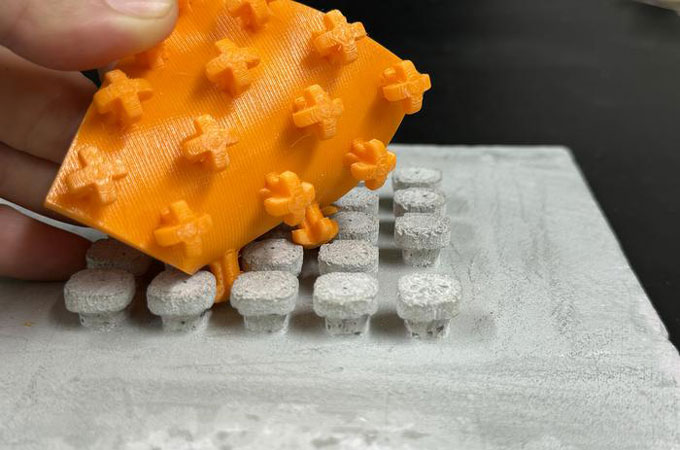
Austria-based Graz University of Technology (TU Graz) has announced that its interdisciplinary research team has succeeded in developing an innovative fastening system under a scientific project called ReCon, marking a breakthrough in the construction sector.
It developed a hook-and-loop fastening system for buildings in the ReCon project together with company partners. This allows different parts of a building to be resiliently connected and, if necessary, easily separated from each other.
The ReCon project, in which the Institute of Architectural Technology, the Laboratory for Structural Engineering and the Institute of Bioproducts and Paper Technology (BPTI) at TU Graz worked together with the companies Axtesys and NET-Automation, was funded by the Austrian Research Promotion Agency FFG and won gold in the research category of the Sustainability Award 2024.
The project focus was placed on the connection of components with different service lives, where irreversible connections usually make replacement difficult.
On the one hand, industrial hook-and-loop components were glued onto conventional concrete or wooden components and, on the other hand, the production of hook and loop components from the raw building materials concrete and wood, as well as from paper materials, were investigated.
Such hook-and-loop systems make it possible to properly separate durable load-bearing structures that are intended to last for decades from more short-lived elements such as installations, surfaces, floors or non-load-bearing interior walls.
The project won the gold medal in the scientific research competition under the sustainability category and is regarded as a pioneering step towards smart and sustainable construction.
Replacement of parts instead of demolition
"The central principle of ReCon is that buildings can be dismantled using clearly defined, separable interfaces," said Matthias Lang-Raudaschl.
"This means that in the event of renovation or new use, only those components that are worn or need to meet new requirements need to be replaced. This considerably extends the overall service life of a building, as a simple replacement of parts is sufficient instead of demolition. This prevents a lot of construction waste and consumption of materials," he stated.
Lang-Raudaschl said the system developed with hook-and-loop components made from raw building materials works in the same way as a conventional hook-and-loop fastener - only on a slightly larger scale.
Mushroom heads or hooks are incorporated directly into the components. In which hook-and-loop elements (specially produced using 3D printing) are firmly hooked, he explained.
The fastening systems developed in the project showed good adhesive tensile strength comparable to industrial products in tests in the Laboratory for Structural Engineering at TU Graz.
The hook-and-loop fastener developed is primarily intended for interiors, for example to replace non-load-bearing wooden or plaster walls or parts with installations.
The researchers hope to further increase the adhesive tensile strength by using injection moulding or stamped metal for the hook-and-loop element instead of the 3D printing used in the project.
Lang-Raudaschl said the new innovative technique makes it possible to renew buildings without demolishing them entirely, thereby reducing construction waste, lowering costs and improving architectural resource management.
The system relies on precisely defined detachable connection points, making it possible to replace surfaces, floors and internal partitions with ease, while preserving the building’s main structure for decades, he added.-TradeArabia News Service
